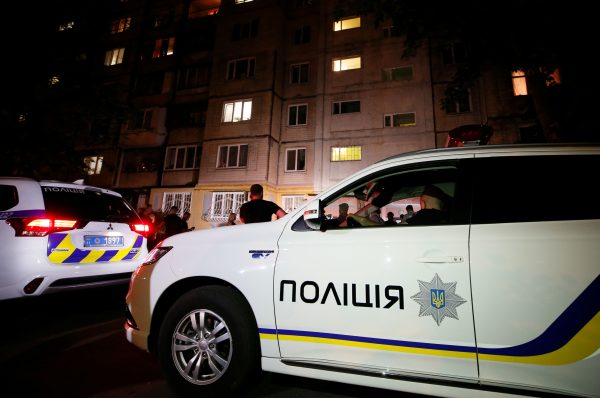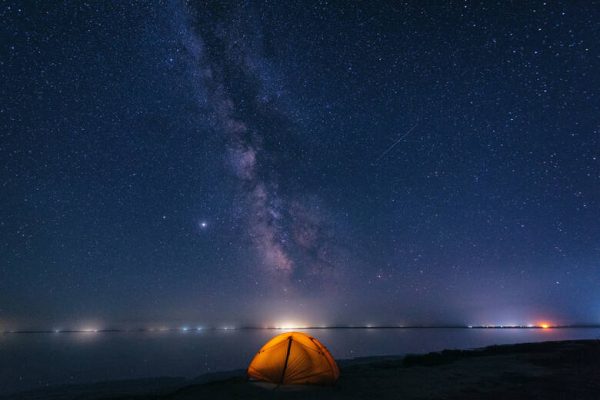Soon, it will be the night of falling stars. In August, the Perseids will once again illuminate the night sky. When and where will they be most noticeable? What other astronomical phenomena can be observed in August, and what is the Sturgeon Full Moon? Welcome to our guide to falling stars, supermoons, and other fascinating astronomical events awaiting us in August 2023.

Perseids 2023 – When is the Night of Falling Stars?
Perseids are one of the meteor showers whose orbit regularly intersects Earth’s orbit every August. Perseids are particularly stunning, and when they pass by Earth, the sky truly seems full of falling stars. Every few moments, you can observe a meteor flash by, commonly known as a falling star. During the Perseid shower, up to 90 meteors can be seen per hour.
Usually, observing Perseids does not require binoculars or telescopes.
So, when in 2023 can the Perseids be better observed? The peak of the Perseids meteor shower in 2023 will be on the night of August 12th to 13th, but falling stars can also be seen on the night sky of August 11th and 14th.
The peak time for observing Perseids, the meteor stream that is exceptionally bright and beautiful, can be admired every year in the second month of summer.
Fortunately, in 2023, the peak of Perseids will occur on a Saturday night, which makes it an ideal time for a weekend trip outside the city to enjoy the falling stars in all their splendor. But where is the best place to go to witness this celestial spectacle?
Falling Stars in August 2023
Often, under favorable conditions, astronomical events can be observed with the naked eye. More ambitious observers can use a telescope or even a simple pair of binoculars. Even such simple equipment allows for better observation of Perseids and other phenomena.
The most favorable time for observing the night sky during falling stars or celestial events is during the new moon phase in good weather when moonlight and clouds do not hinder visibility.
In turn, a good place for observing the night sky is where there is no light pollution. Light pollution occurs in places where a lot of artificial lighting is on at night, primarily in cities and their surroundings. Therefore, if you want to observe the night of falling stars with the best impressions, move as far away from the light as possible. Only then will you see how magnificent the August Perseids are.
Heavenly spots for stargazers are dark forests. Go there to see the Perseids. If you are looking for the perfect place to observe the stars in the summer of 2023, you may need to take a trip outside the city, for example, on a weekend. The most favorable areas for observing Perseids and other phenomena of the night sky are usually outside cities.
Recently, short trips to places with better visibility of interesting astronomical events, especially in the summer when falling stars are an excellent opportunity to organize a journey, for example, to a campsite, have become increasingly popular.
You can find a useful light pollution map at this link. It shows areas where observing astronomical phenomena is complicated but also less crowded places.
Astronomical Events of August 2023
However, Perseids are not the only exciting astronomical event that you can observe in August 2023. There is also a full Sturgeon Moon, several interesting conjunctions, and, if you are lucky, we may even see the most famous moons of Jupiter and Saturn.
When is the best time to observe the night sky? Below, we have prepared a calendar of the most interesting astronomical events in August 2023.
Full Sturgeon Moon
On August 1st at 6:30 pm, the first interesting event of the month will be visible in the night sky: the full moon, nicknamed the Full Sturgeon Moon because at this time, Native Americans caught huge sturgeon in the Great Lakes region of the USA.
The moon will be closer to Earth than usual, making it larger and brighter – this phenomenon is called a supermoon. In August 2023, we will be able to observe another supermoon – the next full moon on August 31st.
Conjunctions of the Moon and Planets
If you enjoy searching for not only stars but also planets in the night sky, conjunctions of the month, that is, nights when the moon is visible in the sky next to one of the planets, are always very useful. In August 2023, there will be several conjunctions of the moon with planets:
August 4th – with Neptune
August 8th – with Uranus
August 19th – with Mars
August 30th – with Saturn






